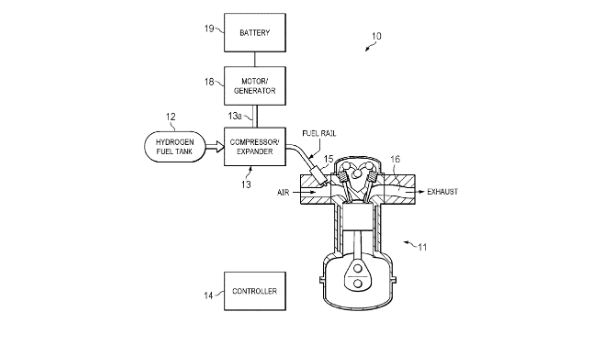The evolution of vehicle fuel systems is essential to meet global environmental targets and reduce dependence on fossil fuels. A notable development in this field is the recent patent for a hydrogen-fueled internal combustion engine vehicle system.
This patent, filed by the Southwest Research Institute, introduces a novel approach to managing hydrogen fuel delivery efficiently.
At the heart of this innovation is a compressor/expander, a critical component installed between the fuel tank and the engine’s fuel delivery system. The design of this component addresses the varying pressure requirements of hydrogen fuel delivery. One of the challenges with hydrogen as a fuel is its tendency to behave differently under various pressure conditions. In response, this system switches modes based on the fuel tank’s pressure.
The compressor/expander operates in two distinct modes to optimize hydrogen fuel delivery:
1. Compressor Mode: When the hydrogen fuel in the tank falls below the desired pressure for delivery, this mode is activated. It compresses the hydrogen, raising its pressure to meet the engine’s needs.
2. Expander Mode: Conversely, when the pressure of hydrogen in the tank exceeds the optimal level for delivery, the expander mode is engaged. This reduces the fuel’s pressure to the required level.
A key feature of the system is its use of advanced control technology. This includes a controller that is integral to the system’s performance. The controller receives real-time measurements of fuel tank pressure and temperature. With this data, it calculates and adjusts the timing of inlet and outlet metering valves to maintain consistent and efficient fuel delivery.
Stay updated on the latest in energy! Follow us on LinkedIn, Facebook, and X for real-time news and insights. Don’t miss out on exclusive interviews and webinars—subscribe to our YouTube channel today! Join our community and be part of the conversation shaping the future of energy.
